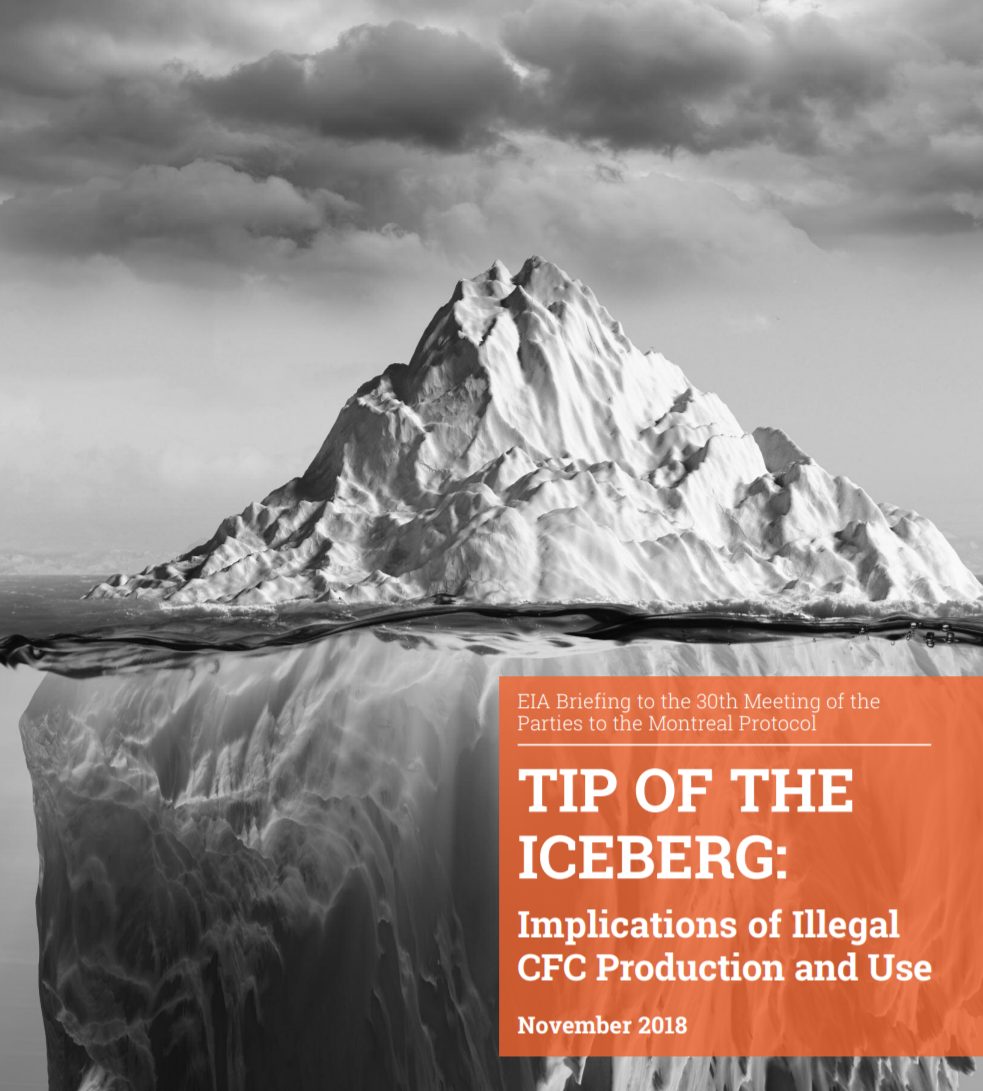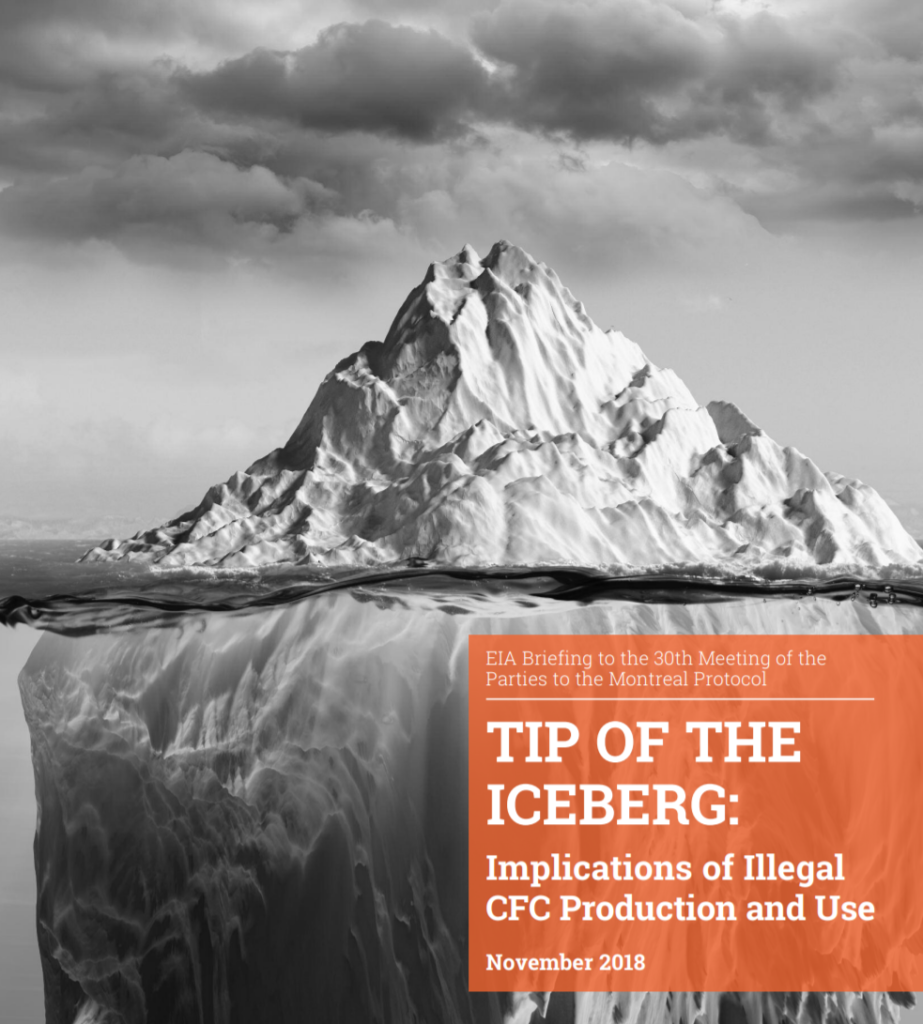Crackdown on illegal CFCs
- PostedPublished 1 December 2018

Unregulated CFC use threatens ozone recovery
The Environmental Investigation Agency (EIA) has confirmed that the long-banned CFC-11, an ozone-depleting chemical, is being used in Chinese industry.
The latest report from the EIA, titled Tip of the Iceberg: Implications of Illegal CFC Production and Use, categorically demonstrates that CFC-11 is being employed as a blowing agent in polyurethane foam production. It features lab reports on three foam samples, taken from previously investigated Chinese factories, all of which confirmed the use of CFC-11.
This chemical is among the worst ozone-depleting substances and also has a global warming potential (GWP) of 4660. The Montreal Protocol, which entered into force in 1989, ultimately resulted in CFC-11 production ceasing altogether in 2010 as countries worked to protect the environment.
Now, however, it’s clear that the chemical is being produced and employed at multiple sites, threatening to undo much of the good work achieved in the past decades and indicating a rise in unchecked and illegal CFC use. As a result, the EIA is now campaigning for rapid and decisive action to crack down on the illegitimate use of these ozone-harming CFCs.
Clare Perry, EIA UK climate campaigns leader, said: “The scale and impact of this illegal trade shows how the Montreal Protocol’s current compliance and enforcement regime is not fit-for-purpose.
“There has never been a greater need to make all possible reductions to greenhouse gas emissions in the fight against climate change; the steps the Protocol takes now will either make or break its reputation as the most successful environmental treaty ever.”
Previously, the EIA published a report called Blowing It that suggested Chinese industry was behind a pronounced rise in global CFC-11 emissions.
Off the back of this report, authorities were reportedly quick to act on the matter and began both investigating and shutting down companies using CFC-11.
It has become clear, though, that it is not only legitimate businesses that are involved with CFC-11.
A spokesperson for the Chinese ministry of ecology and environment, Liu Youbin, recently confirmed that two illegal production sites had been discovered and “smashed.”

Almost 30 tons of CFC-11 was recovered, along with some 180 tonnes of raw materials – all of which will be disposed of.
Youbin confirmed that a total of 1172 companies have now been investigated. Samples from 10 of them were discovered to contain CFC-11 and penalties were subsequently imposed.
“Since joining the Montreal Protocol, the ministry of ecology and environment – and local ecological and environmental departments – have strictly enforced and severely cracked down on the illegal production, use and sales of ozone-depleting substances,” said Youbin, adding that the country would stick to its “zero-tolerance” attitude.
A report from researchers at the University of Bristol, however, suggests that there may be yet another problem; ongoing emissions of carbon tetrachloride. This chemical was used in the production of refrigerants but phased out in 2010 due to its ozone-depleting properties and GWP of 1730.
Despite production reportedly stopping, ground- and atmospheric-based data sampling has indicated that 44,000 tonnes of carbon tetrachloride are being emitted each year. The situation may worsen, too; the study’s results suggest that a new source of carbon tetrachloride emissions appeared in 2012, located in the Shandong province of China.
Lead author of the report, Dr Mark Lunt, said: “Our results show that emissions of carbon tetrachloride from the eastern Asia region account for a large proportion of global emissions and are significantly larger than some previous studies have suggested.”
The exact cause of these emissions is not yet known, although it has been suggested that much of it may be a by-product accidentally released during the manufacture of chemicals such as chlorine. The report also cautions that there are areas, including India and South America, where accurate data isn’t available. Undetected production of ozone-depleting gases, consequently, could be taking place in these regions.
The EIA’s report further highlights trade in other illegal CFCs – including R12, which has a sky-high GWP of 10,200 in addition to causing ozone depletion.
It lists instances of illegal R12 being impounded in Uzbekistan, Micronesia, Kyrgyzstan, China and the Netherlands and also claims that there are “large CFC-12 seizures” that have not been officially reported. In one instance, 900 seemingly new cylinders of R12 were reportedly discovered in Central Asia.
Many CFCs, according to the EIA, also continue to be “openly advertised” on online sites such as eBay – raising further concerns about a lack of enforcement and information regarding these chemicals.
“With the Kigali Amendment coming into effect in 2019 and bringing with it additional challenges for enforcement, the need for decisive action is particularly urgent,” added Perry.
- CategoriesIn SightGlass
- TagsCFCs, Illegal refrigerant, illegal refrigerants, refrigerant, SightGlass News Issue 15

